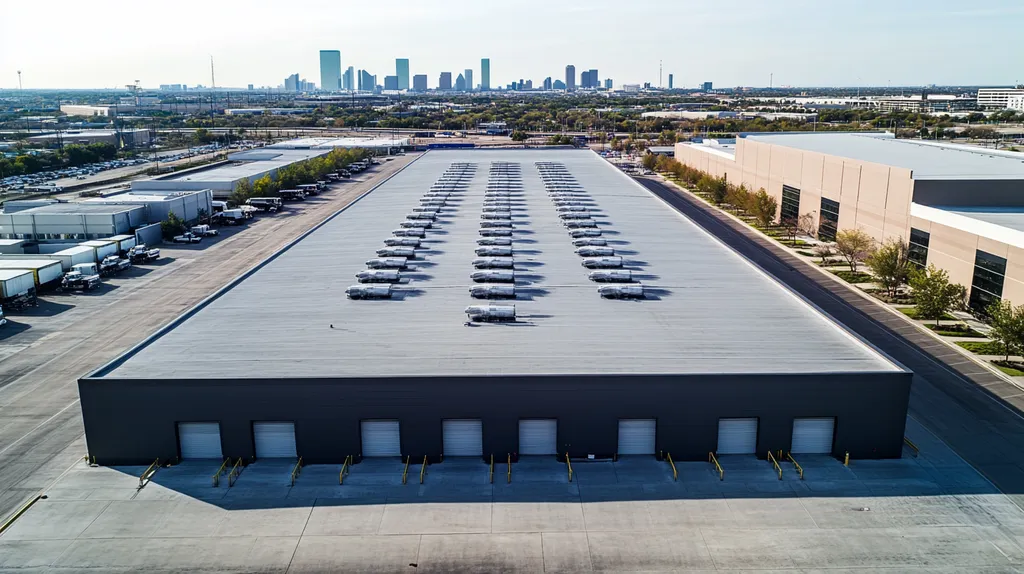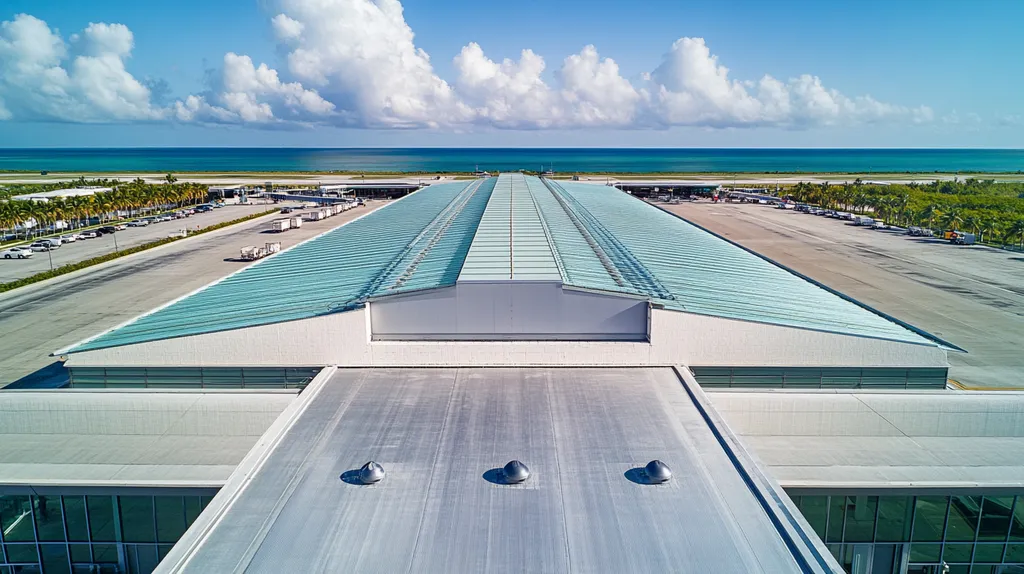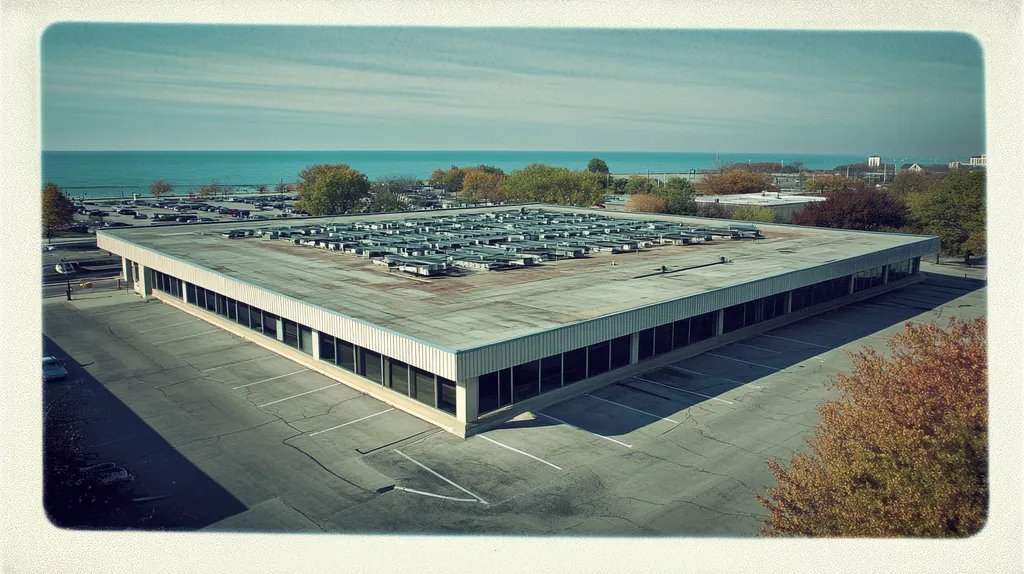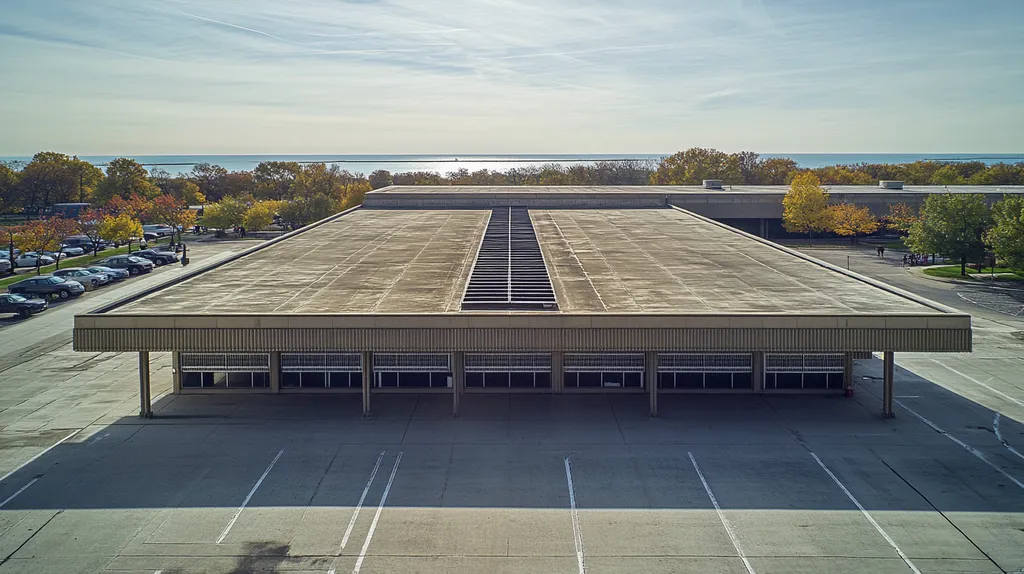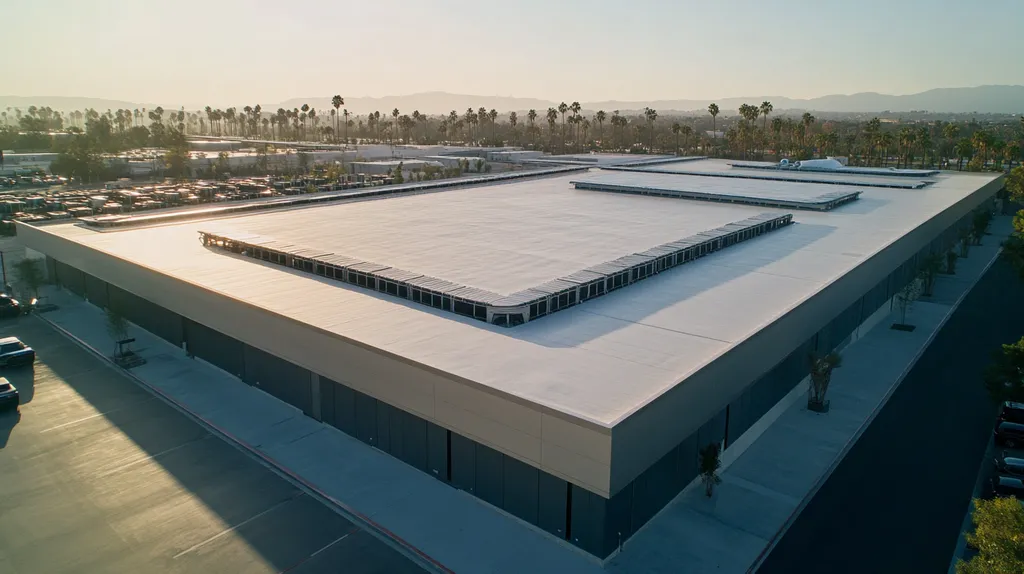In today’s commercial property landscape, a staggering 40% of building maintenance budgets are drained by roofing issues that could have been prevented through proper performance tracking. Yet most property owners still rely on reactive maintenance, leading to premature roof failures and skyrocketing repair costs.
Understanding and monitoring the right metrics can extend a commercial roof’s lifespan by up to 50% while slashing maintenance expenses. From structural integrity indicators to sustainability benchmarks, these vital measurements form the foundation of effective roof management.
This comprehensive guide breaks down the essential metrics every property owner and facility manager needs to protect their roofing investment and optimize performance across its entire lifecycle.
SECTION 1: FUNDAMENTAL CONCEPTS
In the cutthroat world of commercial real estate, understanding the metrics that measure roof performance isn’t just smart—it’s essential. Did you know that nearly 30% of commercial roofs fail far earlier than they should? Such failures can drain thousands from budgets and disrupt business operations. By recognizing and actively monitoring key performance indicators (KPIs), property owners and facility managers can not only reduce risks but also secure a solid return on their investments. This section dives deep into the fundamental metrics that illuminate roof performance, customer satisfaction, and financial viability.
Defining Key Performance Indicators (KPIs)
Key performance indicators (KPIs) are measurable values that reveal how effectively a company meets its goals. In the realm of commercial roofing, KPIs can cover important aspects like leakage rates, energy efficiency, and expected lifespan. By keeping a close eye on these figures, property owners can ensure their roofs are in tip-top shape.
For example, a leakage rate surpassing 1% may signal underlying structural problems or insufficient maintenance efforts. Addressing these KPIs proactively not only prolongs roof lifespan but also enhances overall building performance. Plus, maintaining meticulous records of these metrics gives maintenance teams the crucial data they need for timely action.
Setting benchmarks for each KPI allows for easy comparisons against industry standards, helping owners understand where their roofs stack up against competitors. Timely adjustments based on KPI analysis can significantly lower long-term costs and boost reliability.
Utilizing performance metrics goes beyond mere maintenance; it also aids in strategic planning for future roofing needs. Property owners and facility managers should make it a priority to gather and analyze these vital indicators to stay ahead of potential roofing challenges.
Understanding Customer Satisfaction Metrics
Customer satisfaction metrics are pivotal for gauging the success of roofing projects. These metrics evaluate how effectively roofing services meet client expectations. Common satisfaction indicators include response times, workmanship quality, and the effectiveness of post-installation support.
Imagine a survey conducted on recent roofing projects reveals clients feel overlooked when response times to maintenance requests exceed 24 hours. Tackling such issues not only fortifies client relationships but also fosters repeat business opportunities. Conversely, poor satisfaction scores can lead to negative reviews, jeopardizing future projects.
Moreover, tracking satisfaction metrics over time helps identify trends and target areas for improvement. Analyzing feedback related to craftsmanship and communication enables roofing companies to sharpen their processes and enhance training programs.
Ultimately, satisfied customers elevate a company’s reputation and boost word-of-mouth referrals. Property owners should recognize that customer satisfaction directly affects long-term success and advocate for regular evaluations of these vital metrics.
Basic Financial Health Indicators
Financial health indicators shed light on the economic viability of roofing investments. Essential metrics include return on investment (ROI), total cost of ownership (TCO), and payback period. These figures help owners assess the financial repercussions of their roofing choices.
Calculating an effective ROI encompasses both initial costs and long-term savings derived from energy efficiency and minimized maintenance. For instance, a roof with a lifespan of 20 years and infrequent repairs delivers a considerably more attractive ROI than alternatives burdened with constant expenses.
Furthermore, grasping TCO is crucial; it encompasses not just installation costs but ongoing maintenance and future replacement expenses. Property owners stand to gain by opting for roofing systems that promise lower TCO, ultimately saving funds in the long run.
Finally, the payback period indicates how quickly an investment will generate returns. Shorter payback periods typically reflect more effective investments. Property owners should leverage these financial health indicators to make savvy choices, maximizing budgets while mitigating risks.
SECTION 2: SYSTEM COMPONENTS
The selection of roofing materials can make or break a commercial roof’s performance. With an alarming percentage of roof failures linked to poor material choices, property owners need to understand the stakes involved. Making decisions based on outdated or incomplete information can lead to significant damage, pricey repairs, and safety hazards. This section will unpack the vital components of a roofing system, focusing on how materials, structural integrity, and sustainability considerations are crucial for top-notch roof performance.
Roofing Materials and Their Impact
The roofing materials selected directly affect their durability, energy efficiency, and overall lifespan. For instance, thermoplastic polyolefin (TPO) membranes are popular for their energy efficiency, which can lead to significant savings on utility bills. On the other hand, opting for cheaper, lesser-quality materials can mean frequent repairs and soaring maintenance costs down the line.
Property owners must be aware of the strengths and weaknesses of various materials. Options like EPDM and PVC offer unique benefits tailored to different climates and building uses. Picking the right material not only minimizes leak risks but also extends the roof’s lifespan.
Moreover, roofing materials contribute to a building’s visual appeal, affecting its market value. A well-maintained roof with high-quality materials can enhance property value and improve tenant retention, making it a wise investment in the long run.
In essence, making informed choices about roofing materials is a pivotal metric that impacts both roof performance and the building’s financial health.
Structural Integrity and Safety Standards
Structural integrity is crucial for the longevity and safety of any roofing system. Compliance with stringent safety standards set by local codes and regulations is a necessity. Ignoring these guidelines can lead to catastrophic roof failures that jeopardize the safety of occupants.
The load-bearing capacity of a roof is a vital metric that ensures it can endure environmental stresses like snow, wind, and rain. For example, a roof designed without proper engineering may struggle under heavy snow accumulation in winter, posing risks of collapse.
Conducting regular inspections is essential for monitoring the structural integrity of a roof over time. Property owners should prioritize routine maintenance checks to catch early signs of deterioration, such as sagging or cracking, which could jeopardize both safety and functionality.
Ultimately, ensuring roofing systems meet and exceed safety standards is fundamental for protecting not only the property itself but also the lives of its occupants.
Environmental and Sustainability Factors
As awareness of environmental issues grows, sustainability has become a critical consideration in roofing decisions. Eco-friendly roofing solutions, such as green roofs or reflective membranes, can make a building more environmentally friendly and help lower energy usage.
Choosing sustainable materials benefits the planet and offers economic perks. For example, reflective roofing reduces the ‘urban heat island’ effect and can decrease cooling costs in hotter climates. Buildings designed with sustainability in mind often see substantial reductions in energy expenses over time.
Furthermore, using eco-friendly roofing materials may qualify buildings for government incentives and tax breaks, making sustainability not just a responsible choice but also a financially savvy one.
In conclusion, environmental factors are key metrics influencing modern roofing strategies. Committing to sustainability not only lessens ecological impact but also enhances the value and marketability of commercial properties.
SECTION 3: IMPLEMENTATION METHODS
When it comes to ensuring your commercial roof performs at its best, effective implementation methods are non-negotiable. Poor execution can lead to costly repairs, safety risks, and shortened lifespans. By focusing on project planning, resource allocation, and stringent quality controls, property owners and facility managers can protect their investments and enhance roof reliability. This section outlines key strategies to achieve optimal roofing outcomes.
Project Planning and Scheduling
Effective project planning and scheduling form the backbone of successful roofing ventures. A well-defined timeline outlines critical milestones and ensures that every project phase aligns with overall objectives. Integrating factors like weather forecasts and thorough site assessments into your planning can help avoid delays that can drain budgets.
Clarity in roles and responsibilities among team members fosters seamless communication. Regular updates keep everyone coordinated and allow for quick adjustments when challenges arise. Spotting potential bottlenecks early can drastically reduce the risk of overruns, keeping projects on track.
Leveraging project management software can provide enhanced visibility and accountability throughout the roofing process. These digital tools are excellent for tracking progress, managing tasks, and making better decisions regarding resource allocation. Involving all stakeholders in the planning dialogues ensures a shared understanding of timelines and expectations.
Ultimately, robust project planning ensures roofing systems are completed on schedule, within budget, and with minimal disruption to daily operations. This proactive approach lays the groundwork for long-lasting roof performance.
Resource Allocation and Management
Strategic resource allocation is crucial for optimizing roofing projects. Identifying specific project needs allows facility managers to select the appropriate materials and workforce while keeping expenses in check. A comprehensive resource plan encompasses not just the roofing materials but also the tools and equipment vital for installation.
Synchronized timing with suppliers can prevent material shortages that lead to frustrating delays. Building strong relationships with reliable suppliers ensures on-time deliveries and price advantages. A careful analysis of labor requirements also helps avoid workforce gaps or unnecessary labor costs.
Training and certifying roofing personnel are fundamental elements of resource management. Skilled workers can pinpoint issues before they escalate, leading to higher-quality work and fewer costly mistakes. Ongoing training in the latest roofing technologies enhances overall team performance and promotes a safer work environment.
In conclusion, thoughtful resource management enhances project flow and guarantees high-quality outcomes, ensuring roofs meet and exceed performance criteria.
Quality Control and Assurance
Implementing stringent quality control measures is crucial to the success of any roofing project. Insufficient quality oversight can lead to costly consequences, such as leaks, structural damage, and diminished roof longevity. Establishing a solid quality control program from the start is key to minimizing these risks.
Conducting regular inspections at each phase ensures compliance with both industry standards and manufacturer guidelines. Employing certified inspectors can authenticate that installations meet necessary performance metrics. Systematic documentation of inspections fosters accountability throughout the project.
Establishing feedback mechanisms facilitates continuous improvement based on real-world data. Encouraging team members to report issues openly promotes a culture of proactive problem-solving and enhances workmanship.
Additionally, creating maintenance protocols after installation is vital for sustaining the roof’s performance. Routine inspections and timely repairs play a significant role in prolonging the roof’s lifespan. A comprehensive quality assurance program ultimately shields the investment and boosts the entire building’s performance.
SECTION 4: MAINTENANCE REQUIREMENTS
Regular maintenance is the lifeblood of a commercial roof, crucial for maximizing its lifespan and performance. Neglecting inspections can lead to expensive repairs, or worse—early roof failure! Did you know that proactive maintenance can cut roof repair costs by as much as 50%? By understanding and implementing essential maintenance requirements, property owners and facility managers can protect their investments and ensure their roofs stand the test of time.
Routine Inspection and Monitoring
Routine inspections are fundamental for catching problems before they snowball into major headaches. Property owners should book inspections at least twice a year—once in spring and once in fall. During these crucial check-ups, the focus should be on key components like flashing, drainage systems, and the integrity of the roofing membranes.
Facility managers should look for signs of wear, such as cracks, blisters, or signs of moisture buildup, which may not be visible. Utilizing monitoring tools, like infrared scans, can provide invaluable insights into hidden issues. This proactive strategy not only addresses concerns early but can also facilitate smoother warranty claims down the line.
A systematic checklist during inspections ensures that no critical areas slip through the cracks. Plus, keeping detailed records over time helps track the roof’s condition, which is vital for planning and budgeting future repairs or replacements.
By prioritizing routine inspections, property owners can make informed decisions and drastically reduce the risk of unexpected failures. This strategic approach ultimately contributes to longer-lasting and better-performing roof systems.
Preventive Maintenance Strategies
Preventive maintenance strategies are your roof’s best friend, essential for retaining optimal performance. Regularly clearing debris and ensuring proper drainage can significantly reduce the risk of water pooling, which often leads to leaks. Property managers should implement a cleaning schedule, particularly in areas surrounded by heavy foliage.
Additionally, checking and maintaining sealants and membranes is key. Cracked or worn seals can open the door for water infiltration, which can wreak havoc on underlying structures. Applying protective coatings regularly can defend the roof against harmful UV rays and extreme temperature fluctuations.
Investing in a roofing maintenance program can boost roof longevity too. These programs generally include scheduled service visits and comprehensive assessments of the roof’s condition. With a robust maintenance plan in place, property owners can save money and stave off bigger problems down the road.
Not only does preventive maintenance extend the lifespan of the roof, but it can simultaneously enhance the building’s energy efficiency. This proactive investment pays off handsomely in the long run.
Emergency Repair Protocols
No matter how well a roof is maintained, emergencies can strike. That’s why having a clear emergency repair protocol is essential for minimizing damage and maintaining safety. Facilities managers should outline a plan detailing steps to take during severe weather events or unexpected leaks.
Speed is of the essence during emergencies, so property owners should establish relationships with trusted roofing contractors who can respond swiftly. Having contact information readily available increases the likelihood of timely repairs during stressful situations.
Training staff on emergency protocols is also crucial. Knowing how to quickly locate leaks or damage can significantly mitigate risks. Temporary solutions, such as tarping, can help prevent further damage while waiting for professional intervention.
A comprehensive emergency repair strategy protects both the building and the continuity of business operations. By having a plan in place, property owners can avoid costly downtime and keep their facilities running smoothly.
SECTION 5: PERFORMANCE METRICS
Grasping performance metrics is vital for sustaining a commercial roof’s efficiency and effectiveness. As maintenance costs rise and roof longevity becomes a priority, leveraging accurate metrics can guide property owners toward informed decisions. For instance, studies reveal that buildings regularly monitoring roof metrics can slash repair needs by up to 30%. By zeroing in on crucial factors like customer acquisition, job completion, and employee productivity, property owners can elevate their roof management strategies to new heights.
Customer Acquisition and Retention Rates
Monitoring customer acquisition and retention rates provides critical insights into a roofing contractor’s dependability. A robust acquisition rate suggests effective marketing strategies, while a high retention rate signals customer satisfaction. Research shows that keeping existing clients costs five times less than attracting new ones.
By tracking these metrics, property owners can pinpoint reputable contractors worth their investment. An established roofing company should aim for an average retention rate of around 80%. If retention dips below this mark, it may indicate concerns regarding service quality or customer engagement.
A positive customer experience frequently translates into valuable referrals, enhancing a contractor’s reputation. Happy customers are likely to share their experiences, which can attract prospective clients who value trusted services.
Incorporating regular customer feedback can further refine service practices. Engaging clients allows roofing companies to adapt to changing expectations, ensuring a better experience and loyalty.
Job Completion and Average Repair Times
Job completion rates and average repair times are essential metrics for gauging contractor efficiency. Delays in repairs can expose roofs to additional environmental damage, inflating potential costs. Studies found that timely repairs can reduce overall roofing expenses by as much as 20%.
Keeping a close eye on these metrics helps property owners set realistic expectations with their roofing contractors. A reliable job completion rate of 90% or higher demonstrates effective project management and commitment.
Furthermore, tracking average repair times sheds light on a contractor’s responsiveness. For urgent issues, a target average repair time of less than 72 hours is optimal, emphasizing the importance of prompt service.
By establishing benchmarks for these metrics, property owners can hold contractors accountable, allowing for adjustments to contracts or service levels as needed.
Employee Productivity and Safety Incident Rates
Employee productivity plays a crucial role in the overall success of roofing projects. An efficient workforce completes projects faster, reducing labor costs significantly. Studies indicate that companies with more engaged employees report 21% higher profitability.
Simultaneously, tracking safety incident rates helps ensure a compliant and secure workplace. An average safety incident rate of less than four injuries per 100 full-time workers is considered industry standard, so exceeding this ratio raises alarms about training and safety practices.
Integrating safety training into employee assessments can enhance productivity. Workforces that prioritize safety often experience reduced incident rates and boosted morale.
By measuring both productivity and safety metrics, property owners can better manage their workforce and cultivate a culture of accountability, motivating teams to improve performance while adhering to safety standards.
SECTION 5: PERFORMANCE METRICS
Understanding performance metrics is not just a nice-to-have; it’s vital for the sustainability and efficiency of a commercial roof. As maintenance costs climb and roof longevity moves to the forefront, precise metrics can steer property owners in the right direction. Research reveals that buildings which monitor roof metrics can cut repair needs by up to 30%. By honing in on critical factors such as customer acquisition, job completion, and employee productivity, property owners can elevate their roof management strategies and protect their investments.
Customer Acquisition and Retention Rates
Customer acquisition and retention rates are telling indicators of a roofing contractor’s reliability. A high acquisition rate is a sign of effective marketing skills, while a strong retention rate speaks volumes about customer satisfaction. Interestingly, studies show that retaining existing clients is five times less expensive than bringing new ones on board.
By diligently tracking these metrics, property owners can sift through various contractors and pinpoint those who are genuinely worth their investment. A solid roofing company should aim for an average retention rate around 80%. If the numbers drop below this benchmark, it might suggest concerns over service quality or customer experience.
Moreover, a positive experience often translates into referrals, enhancing a contractor’s reputation and generating new business opportunities. Satisfied clients love sharing their experiences, which can attract prospective clients searching for reliable services.
Regularly soliciting customer feedback can also refine a contractor’s service approach. Engaging clients helps companies adapt to shifting expectations, ensuring a better overall experience and fostering loyalty.
Job Completion and Average Repair Times
Job completion rates and average repair times serve as essential metrics for evaluating contractor efficiency. Delays can expose roofs to environmental damage, inflating potential repair costs. Research has shown that prompt repairs can lower overall roofing expenses by as much as 20%.
By keeping a close watch on these metrics, property owners can set realistic expectations with their roofing contractors. A job completion rate of 90% or higher is a strong indicator of reliability and effective project management.
Moreover, tracking average repair times reveals how responsive a contractor is to urgent issues. Ideally, for emergency repairs, the average response time should be less than 72 hours, highlighting the importance of quick action.
Establishing benchmarks for these metrics drives accountability. This encourages stakeholders to evaluate contractor performance and make necessary adjustments to contracts or service levels.
Employee Productivity and Safety Incident Rates
Employee productivity does more than affect project timelines; it can significantly influence overall costs. A productive workforce not only completes projects more quickly but can also reduce labor expenses. Interestingly, companies with high employee engagement see 21% greater profitability.
Keeping a tab on safety incident rates helps ensure a secure and compliant work environment. An acceptable safety incident rate is typically fewer than four injuries per 100 full-time workers. Exceeding this ratio raises flags about safety training and protocols.
Integrating safety training into employee assessments can boost productivity. Organizations that prioritize a safety-oriented culture often see lower incident rates and enhanced staff morale.
Measuring both productivity and safety metrics empowers property owners to manage their workforce effectively. It cultivates a culture of accountability and motivation, encouraging teams to excel while adhering to safety standards.
The Bottom Line
With 40% of commercial roofs failing prematurely due to inadequate performance tracking, the stakes couldn’t be higher for property owners and facility managers.
The metrics outlined in this guide – from structural integrity indicators to sustainability benchmarks – form an essential framework for protecting valuable roofing investments.
By implementing proper monitoring protocols, businesses can extend roof lifespans by up to 50% while reducing annual maintenance costs by 30% or more.
The future of commercial roofing lies in data-driven decision making, where careful tracking of KPIs enables proactive maintenance rather than costly reactive repairs.
Property owners who embrace these performance metrics today position themselves to maximize their roofing ROI while minimizing risks for decades to come.
FREQUENTLY ASKED QUESTIONS
Q. What are key metrics for commercial roof performance?
A. Key metrics include leakage rates, energy efficiency, and expected lifespan. These metrics help property owners monitor their roof’s condition and ensure timely interventions, ultimately prolonging its life and enhancing overall building performance.
Q. How do roofing materials affect industrial roof performance?
A. The choice of roofing materials directly impacts durability, energy efficiency, and lifespan. High-quality materials can lessen maintenance needs and enhance energy savings, while poor selections can lead to leaks and costly repairs.
Q. What role does project planning play in commercial roofing?
A. Effective project planning ensures timelines align with goals and prevents costly delays. It involves thorough assessments of the site and clear communication among the team, leading to efficient roofing outcomes and minimized disruptions.
Q. Why is routine maintenance vital for industrial roofs?
A. Regular maintenance helps catch issues before they escalate into significant problems. Booking inspections twice a year and maintaining a proactive cleaning schedule reduces risks, protects investments, and extends the roof’s lifespan.
Q. How can performance metrics improve commercial roofing decisions?
A. Collecting performance metrics helps identify areas for improvement and guides informed decisions about maintenance and contractor selection. Tracking customer satisfaction and repair times ensures better management of resources and enhances overall service quality.
Q. What should I include in an emergency repair protocol for my commercial roof?
A. Your emergency repair protocol should outline steps for severe weather events and unexpected leaks. Include contact information for trusted contractors and ensure staff are trained to quickly locate damage for timely repairs and mitigation of further issues.
Q. How do environmental factors influence commercial roof choices?
A. Sustainability initiatives, such as eco-friendly materials and reflective membranes, can enhance energy efficiency while reducing the ecological footprint. Choosing environmentally friendly options not only benefits the planet but may also provide financial incentives, making them a smart choice for property owners.


